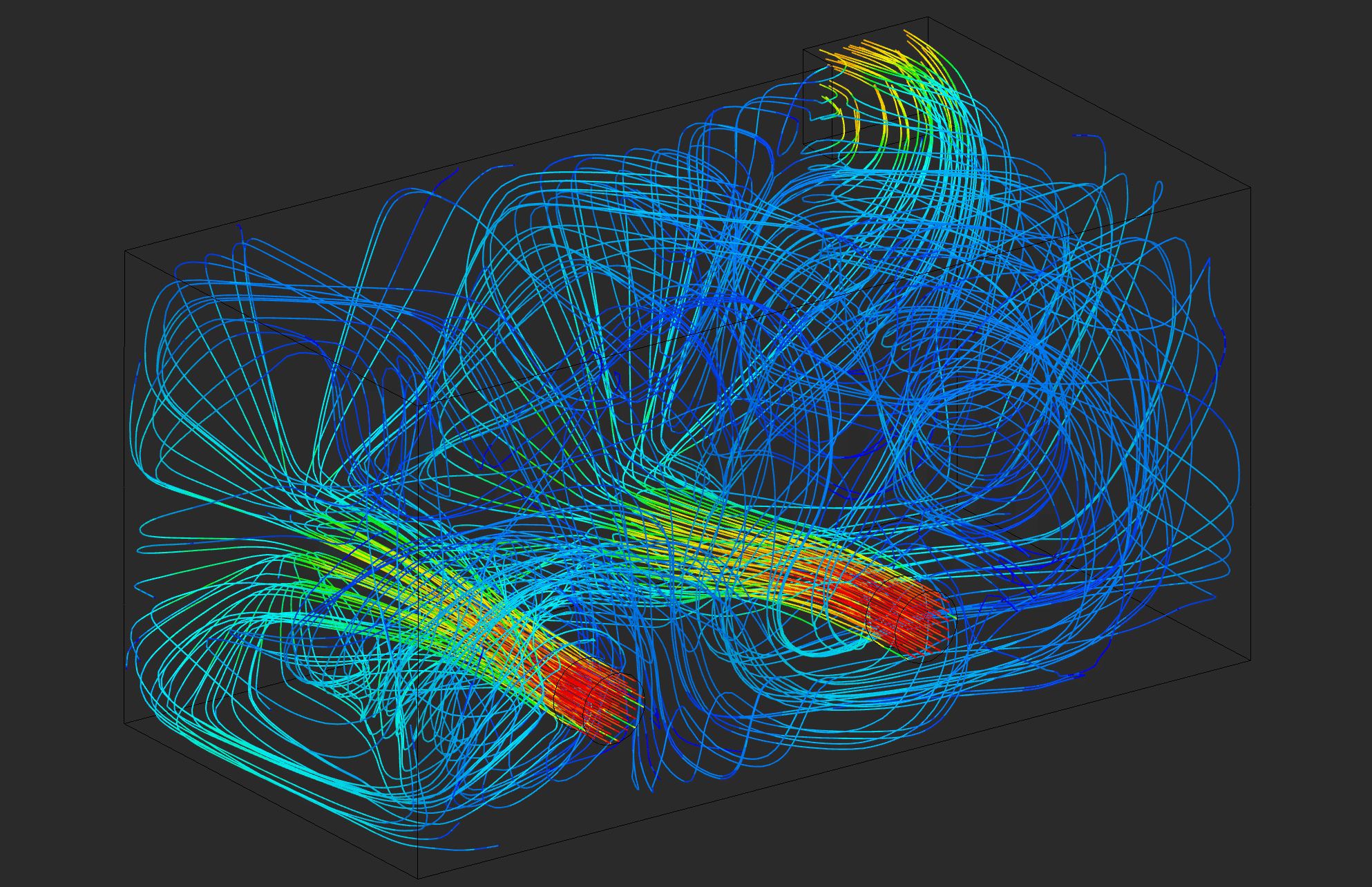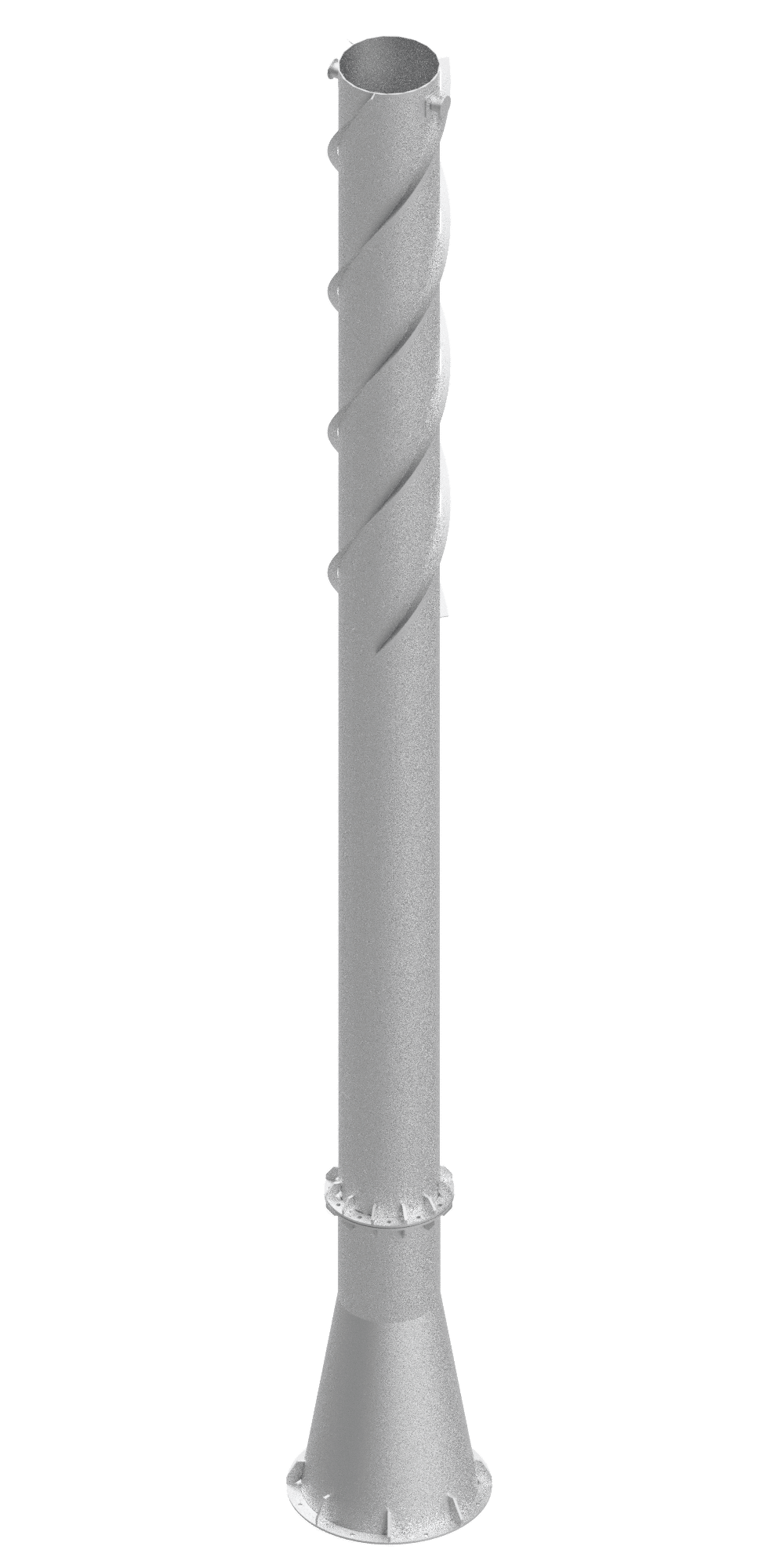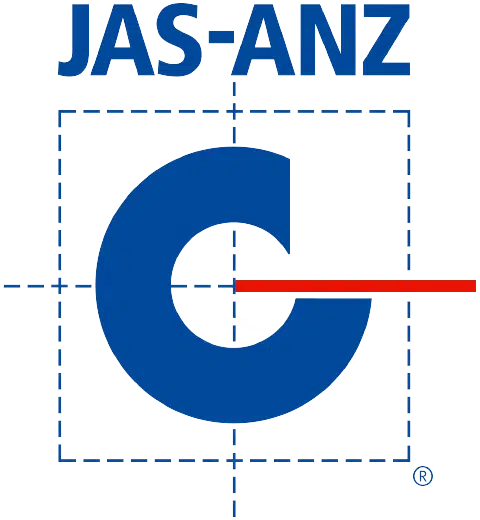Standalone Incinerators
Incinerators – Standalone
Macrotec’s Standalone Incinerators offer an efficient way to dispose of a wide range of wastes while reducing the environmental impact.
Our incinerators have been designed to reduce every possible threat to the environment, while providing a reliable and cost effective solution. We make use of advanced designs in our combustion plant, which regulates the combustion rate, temperature in the different chambers, turbulence, gas velocities and supply of oxygen.
Lowest Emissions
All our incinerators are optimized to minimise emissions, with large combustion and settling chambers, high velocity combustion air, and high output burners. See our Incinerators with Filtration for units that comply to EU emission regulations.
Quality
Our objective is to design and manufacture Quality Incinerators, that are robust, easy to operate, and with low maintenance requirements.
Certification
Macrotec is certified to the following standards:
ISO 9001:2015 | Quality Management Systems
ISO 14001:2015 | Environmental Management Systems
ISO 45001:2018 | Occupational Health & Safety Management
Design
Our Incinerators are two chamber units, with auxiliary burners, combustion air fans, manual or auto feeder, and a stack.
Incinerator
All our incinerator models have two chambers, with a large hearth to help distribute the waste, and a large secondary chamber to promote settling of particulate matter (dust). The chambers are also sized for a two second reaction (retention) time.
We use a high temperature alumina-silicate refractory, with a cold crushing strength of 80MPa and service temperature of 1,500˚C to cast our incinerators. The refractory is acid resistant with very high abrasion resistance. We also insert 100mm of low-density insulation, giving an incubator a typical R-value of 1.54m²K/W, minimising heat loss for lower fuel consumption and a safer working environment.
All our incinerators operate on a continuous feed basis. This entails waste being loaded on fixed intervals with ash being removed from the rear without the need to stop. Due to not stop and starting as you would with a batch incinerator, fuel consumption is improved (no preheat required), and emissions are also improved due to a more controlled combustion process.
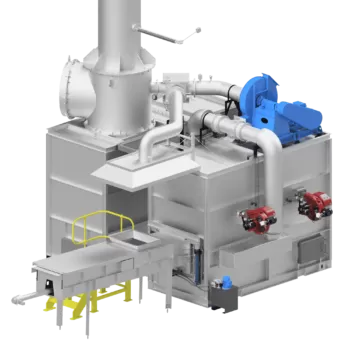
Isometric View: MacroBurn V330
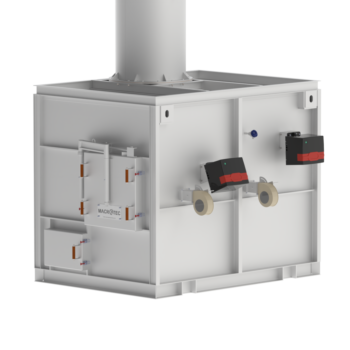
Isometric View: MacroBurn V100
Containerised (Optional)
Our incinerators can be optionally containerised for easy and cost-effective transport and site establishment, with only a concrete plinth required. Incinerators are containerised in 20ft or 40ft GP containers, and includes:
- An insulated platform, with the incinerator being installed on-top of the platform. The platform includes a diesel run-off area for safety purposes.
- Weather louvres and extractor fans for adequate ventilation.
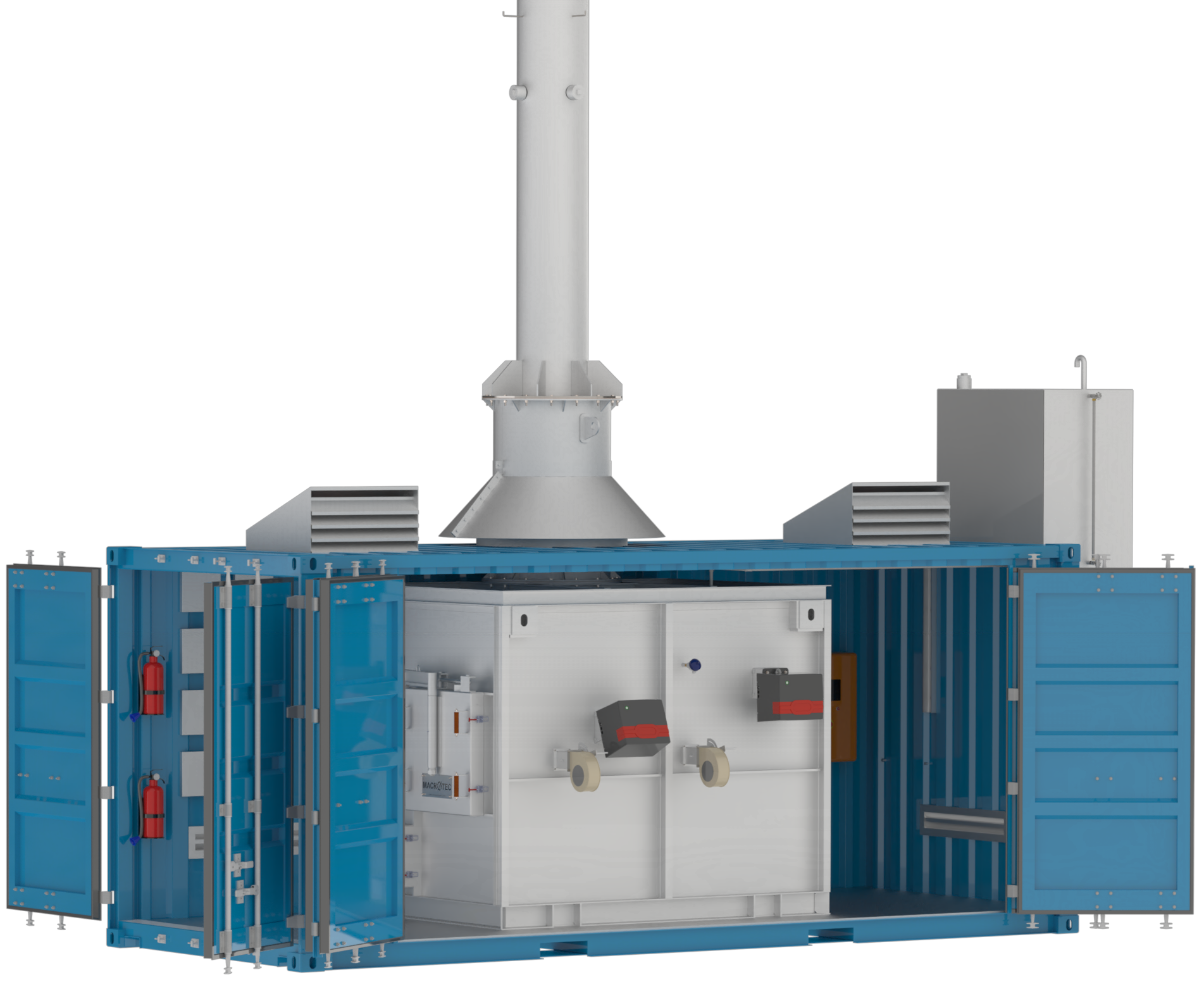
- Lights with a DB panel.
- The control panel on the container wall.
- Cable trays for all electrical wiring.
- Flashing on the chimney (during on-site installation).
- Fire extinguishers.
- Safety signs.
- A solenoid valve on the diesel line to isolate the line for safety purposes.
- Diesel line (conforming to BS EN746-2) and a 1,000L diesel tank (the diesel tank is mounted outside during installation on-site).
Manual Feeder (Optional)
Our incinerators come with the option of a manual feeder. The manual feeder provides a cost-effective solution for safer and more controlled feeding, with the operators puling the feeder back, placing the waste into a hopper, and then pushing the waste into the incinerator. During this process the operator is not exposed to direct heat from the incinerator.
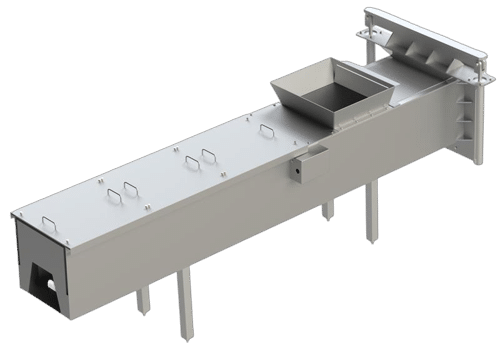
Auto Feeder (Optional)
Our incinerators also have the option for a fully automated feeder. The auto feeder is as the name suggests completely automated, with the operator only being required to load waste into the feeder. Once the feeder is loaded, and safety button engaged, the system will determine when to feed. This prevents over feeding by operators and increases safety around the incinerator feeder.
Burners
The burners provide auxiliary heat, heating up the incinerator before feeding commences, and ensures that the temperatures remain high and stable during incineration. Diesel, LPG, and Natural Gas burners are available, and includes the burner fuel train.
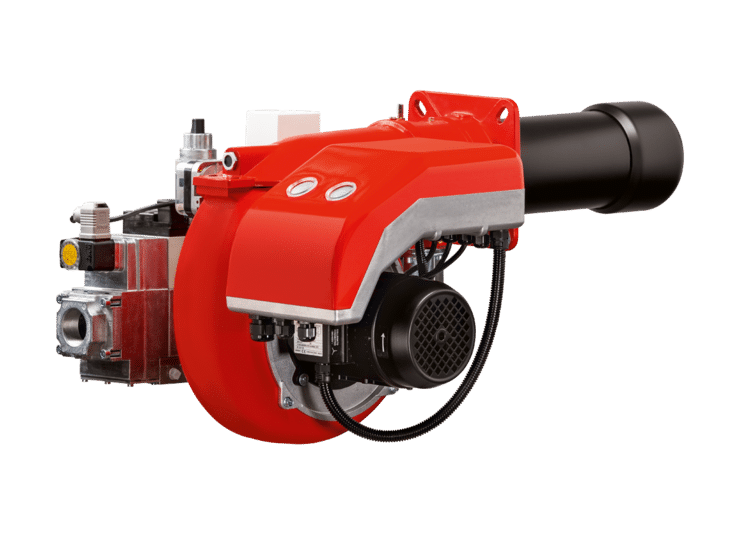
Stack
The standard stack height on our incinerators ranges from 7m to 15m, depending on the model size, with taller stacks optional. Our stacks are taller than most of our competitors for good reason, the increased height increases the draft, increasing the velocity of the flue gas, releasing it at greater height, resulting in better dispersion.
According to EPA (Environmental Protection Agency – USA), Good Engineering Practice for stacks is calculated as H + 1.5L, where H is the height of the building itself or any significant nearby structure or structures and L is the lesser of the projected height or width of the building in question. If this is applied to the typical building in a remote setting, away from larger building, a minimum stack height of 7m would be recommended. This needs to be calculated on a site-by-site basis and might require a taller stack.
Combustion Air
Our incinerator combustion air is designed to optimize turbulence and mixing in the primary chamber, by blowing in the combustion air at high velocity over the waste. This promotes combustion and also increases combustion efficiency by ensuring that combustion gasses are adequately mixed with oxygen for the oxidation of combustible gasses.
CFD Simulations
CFD (computational fluid dynamics) simulation is done on each incinerator we design to optimize the design and operation. We use CFD to optimise:
- Chamber sizes and dimensions to help reduce cold spots and shortcuts
- Burner placement to optimise the distribution of thermal energy
- Fan placement to optimise mixing of oxygen and flue gas and overall turbulence
